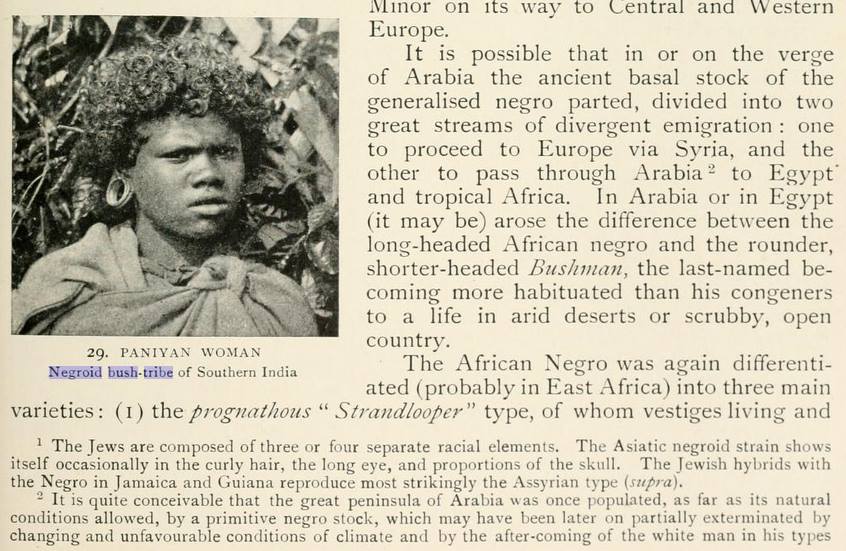This article is a response to GotQuestions.org’s article “Are There Any Black People Mentioned In The Bible?“
Are there any black people mentioned in the Bible? The answer is yes. However, GotQuestions.org’s response is both Biblically inaccurate and historically insufficient. With that said, this rebuttal isn’t about bashing or condemnation, but about correction, education, and edification.
Black People Mentioned In The Bible
While we do agree that skin color is not relevant to the overall message of the Bible, skin color is a matter of fact for human beings. This basic fact of life is why people have questions about the racial make up of Biblical people.
“We can say with a fair degree of certainty that, yes, the Bible does mention black people, although the Bible does not explicitly identify any person as being black-skinned. Neither does the Bible specifically identify any person as being white-skinned. A person’s skin color is rarely mentioned in the Bible; the color of one’s skin is meaningless to the basic message of the Bible.” – Got Questions.org
There is one major reason the Bible does not focus on the skin color of Israel, and that is because they are a family. There is no need tot tell their own family what color they are. When the Bible was being written, it was being written by a family to their family. Families know what their skin color is and therefore it would not be a central focus of the text.
As far as skin color is concerned, the Bible does identify skin color on many occasions. Here are just a few examples of direct references to appearance:
- Kedar: Named so based solely on his skin color. His name means “dark skinned”, which makes sense because his mother was an Egyptian from the lineage of Ham.
- Moses: Mistaken for an Egyptian after fleeing Africa to reside in Arabia.
- Shulammite Woman: The woman in Song of Solomon identifies herself by the phrase “I am black” twice. One of these mentions explains that she is black “because the sun hath looked upon me.”
- Paul: Mistaken for an Egyptian and his ability to speak Greek was questioned because of his appearance. This also leads the guards to assume he was not a Roman citizen and almost beat him as a result.
- Niger: An apostle mentioned in Acts. His name literally means “black”.
To be fair, GotQuestions.org does list Zipporah, Cush, Bathsheba, the Queen of Sheba, Simeon of Cyrene, and Ethiopians as potentially black. What is interesting is that the majority of Ham’s descendants are left off of the list, while the descendants of his sons Phut (Libya) and Cush (Ethiopia) are listed.
The Middle East Was Originally Black (Hamite & Hebrew)
In the following portion of their response, GotQuestions.org delivers a highly inaccurate response.
“The vast majority of the Bible’s narrative takes place in the Middle East, in and around Israel. Neither “black” nor “white” people are common in these regions. The majority of people in the Bible are Semitic and would have been light to dark brown in complexion. Ultimately, it does not matter what skin color the people in the Bible had.” – Got Questions.org
Both of these statements are wrong according to scripture, history, and geography. The majority of the Bible takes place between the Middle East and Africa, but the Bible is clear that the ancient Middle East was originally inhabited by descendants of Ham (Genesis 10:6-20).

The men in the image above were the Arabian guides of Bertram Thomas as he wrote his book. Neither the Bible nor what we know about history supports the statement that “neither black nor white people are common in these regions.” In fact, all accounts of pre Greek, Roman, and Arab invasions confirm that the modern Middle East was a majority black region, with lighter skin becoming more prevalent post 7th century as a result of the Arab Conquests.
Another undeniable fact is that Israel shares a border with Egypt, which is located in Africa. To assume that Egypt did not have black people has no historical basis. To assume that people do not move and migrate to other areas has no historical basis. To say that black people were not common in an area that shares a border with an entire continent full of black people, is false. This would also make the Bible’s claim of Babylon being a Cushite empire false as well (Genesis 10:6-20).
Tacitus Describes The Jews
Tacitus was a Roman historian that referenced the appearance of the Jews and the rumors about them circulating at his time. His description of them seems to confirm a dark skinned or black Israel:
“A few authorities hold that in the reign of Isis the surplus population of Egypt was evacuated to neighboring lands under the leadership of Hierosolymus and Judas. Many assure us that the Jews are descended from those Ethiopians who were driven by fear and hatred to emigrate from their home country when Cepheus was king.” – Tacitus, Histories 5.2 (110 A.D.)
The testimony of Tacitus is important for two very important reasons:
- It confirms why Paul was mistaken for an Egyptian in the book of Acts.
- If Ethiopians and Egyptians were drastically different in skin color, there would not have been rumors as to which group the Israelites originated from.
Either ancient Ethiopians were much lighter in the past or ancient Egyptians were much darker in the past. Seeing as there are not serious arguments in favor of a much lighter Cush / Ethiopia in antiquity, we must conclude that ancient Egyptians were much darker than they are in the current day. Consequently, if both Egyptians and Ethiopians were darker, and Israelites were being associated with both, it would also imply a much darker ancient Israel.

The Majority Were Not Semetic (Shemites)
Here is a map that shows where the descendants of Ham and Shem settled. Hamite areas are marked in red and Shemite areas are marked in green. We can see from the visual that the statements made by GotQuestions.org were incorrect.

Zipporah Was Not A Cushite
“Some scholars guess that Moses’ wife, Zipporah, was black since she was a Cushite (Numbers 12:1). Cush is an ancient name for an area of Africa.” – Got Questions.org
Here we find a another error. Zipporah is a Midianite descendant of Abraham and his third wife Keturah (Exodus 2:15-22). Since Midianites descend from Abraham and Cushites descend from Ham, it is not possible that Zipporah was a Cushite. This discrepancy indicates that Moses likely took a second wife and she was the Cushite.
Ethiopians and Hebrews
The following part of GotQuestions.org’s response seems to indicate a disconnect between personal belief and historical fact.
“The Ethiopian eunuch in Acts 8:37 was almost certainly black. Ethiopians are mentioned about 40 times in the Bible, and we can assume that these are references to black people, since Ethiopians are black. The prophet Jeremiah asked, “Can the Ethiopian change his skin?” (Jeremiah 13:23)—the natural assumption is that Jeremiah refers to black skin.” – Got Questions.org
They readily admit that Ethiopians, who are descendants of Cush, are black. If Cush is black, it would also make sense that his brothers Phut (Libya), Mizraim (Egypt), and Canaan were black also. This would invalidate their statement that black people are not common to Canaan, even though Canaan’s father Ham and brother Cush were black. Egypt was named KMT in the past, which means “black land”, and it shared a border with Canaan (present day land Israel).
Dismissive and Incorrect
Multiple times in their response, GotQuestions.org attempts to dismiss the discussion while engaging in it, by saying, “we can take our eyes off of skin”.
“Most Bible teachers believe that black people are descendants of Noah’s son Ham (Genesis 10:6–20), but we cannot be sure since the Bible does not specifically say. When it comes to skin color, the Bible is consistently silent. The color of the skin is not as important to God as the condition of the heart. The gospel is universal good news. Black people, white people, and every shade in between are invited to come to Christ for salvation. By the grace of God we can take our eyes off of the skin and focus on the soul.” – Got Questions.org
This has become an all to familiar response towards people of color from Europeans that do not want to discuss the history of the Middle east and the Bible. These conversations tend to be uncomfortable and often lead to more questions about race, identity, and historical facts. Until we begin to look at the history and teach an accurate version of it, these questions will continue to arise.




